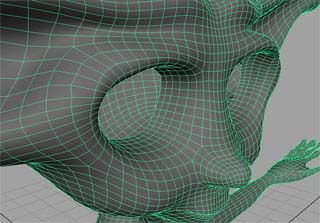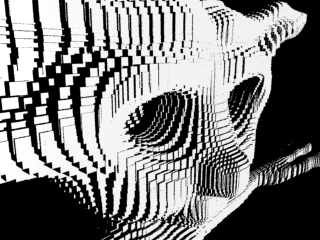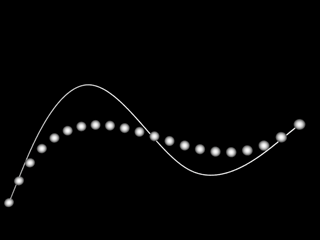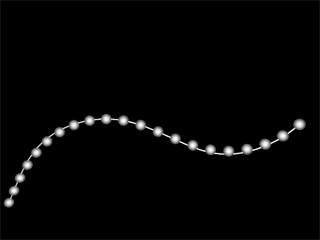Introduction
Slim Ribbox Scripting I & Scripting II
provided introductory and intermediate examples of using TCL expressions in a slim ribbox.
This page provide several ribbox (TCL) scripts that cause a polygon mesh and a nurbs
curve to be replaced by a series of objects. In the first example, the MEL commands clientcmd
and pointPosition are used to querry the vertex data of a polygonal mesh. The
xyz coordinates of each vertex of the mesh are used to position (arbitary) objects across the
mesh. The second example uses pointOnCurve to replace a curve with a series of objects.
Ordinarily, when replacing a proxy object with a single archive rib ie. pre-baked rib, the
(RenderMan not Maya) visibility of the proxy is controlled by the menu item found in
RenderMan Globals ie. mtor invis. Unfortunately, with release of RAT 6.5 assigning
mtor invis to a proxy object causes mtor to totally ignore the object! Both ribbox scripts
resort to writing Opacity 0 0 0 into the rib stream. If the shader (appearance)
attached to the proxy recognizes Os (ie. surface opacity) the proxy will become invisible.
Hopefully, a later version of RAT will restore the "traditional" behavior of mtor invis.
Polymesh Replacement
Figure 1 shows a character model that was kindly made available to me by Kelly Eisert. Figure 2 shows the effect the ribbox, shown in ribbox listing 1, has had on the rendering of the model.
[
set tok [split $OBJPATH |]
set tnode [lindex $tok end-1]
set n [clientcmd "polyEvaluate -v $tnode"]
set n [lindex $n 0]
set out ""
for {set i 0} {$i < $n} {incr i} {
set str $tnode
append str ".vtx\[$i\]"
set pnt [clientcmd "pointPosition -world $str"]
set rib "TransformBegin\n"
append rib "Transform \[1 0 0 0 0 1 0 0 0 0 \
1 0 0 0 0 1\]\n"
append rib "\tTranslate $pnt\n"
append rib "\tReadArchive \"G:/archives/cube.rib\"\n"
append rib "TransformEnd\n"
append out $rib
}
append out "Opacity 0 0 0\n"
return $out
]

figure 1 - original model

figure 2 - polygon mesh replaced by cubes

